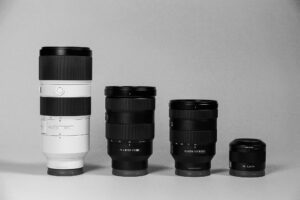In the age of digital everything, the world of photography has split into two camps: those who shoot digital and those who love the timeless feel of film, a battle of analog vs. digital photography. And both sides are usually too passionate to actually explain the reasoning behind their choice.
Digital photography became dominant when sensors replaced film. But in recent years, there’s been a quiet resurgence. A growing number of photographers are returning to analog. Why?
Let’s break down the differences between film and digital photography, discover the advantages and disadvantages of each, and explore why analog is making a comeback.
TL;DR:
- Digital has higher resolution, ISO range & ease of use
- Film is slower, more hands-on, and expensive long-term
- Analog offers a nostalgic, artistic experience
- Digital is more practical for professionals
- Film is making a creative comeback in recent years
- Best of both worlds? Use film for passion, digital for clients
1. Resolution
Most digital cameras today -even entry-level models- offer resolutions over 20 megapixels.
Film, on the other hand, doesn’t use pixels. Instead, its resolution is roughly equivalent to 4–16 megapixels for standard 35mm film.
That means digital generally has a clear edge here. Unless you’re using medium or large format film, where the results can rival or surpass digital.
2. ISO Flexibility
In film cameras, each roll has a fixed ISO (usually between 50 and 6400). Want to shoot at a different ISO? You’ll need a new roll.
Digital cameras let you change ISO instantly and go to much higher values, even beyond 100000.
This makes shooting in low light far easier with digital gear.
3. Noise vs. Grain
High ISO always introduces visual imperfections: grain in film, noise in digital.
Modern digital cameras handle noise much better, especially full-frame mirrorless ones with newer sensors.
Film grain can be charming and artistic, but it’s not always welcome.
4. Ease of Use & Workflow
With digital, you can shoot, edit, and publish your photo online in minutes.
Film takes longer: shoot, develop, scan, then edit. If you rely on labs, it can take days.
Even if you have your own darkroom, it’s a time-consuming process.
Digital wins for speed and convenience, especially if you’re working on deadlines or sharing online regularly.
5. Cost Over Time
Buying a film camera body can be cheaper than buying a modern DSLR or mirrorless camera.
But film gets expensive fast. Every roll costs money. Development and scanning cost more.
If you shoot often, analog becomes significantly more expensive than digital in the long run.
Unless you process and scan your own film, digital is much more cost-effective.
6. Dynamic Range
Film used to have better dynamic range, especially in highlights.
But with today’s cameras -and RAW files- the gap has closed. Many digital sensors now offer equal or even better performance, especially in shadow detail.
7. Storage & Sharing
- One memory card can store hundreds of digital images.
- A roll of film holds about 36.
- Digital files live on hard drives or the cloud.
- Film needs physical space for storage.
Digital offers efficiency and scalability for anyone shooting regularly.
8. Gear Durability & Battery Life
- Analog cameras often have metal bodies, are fully mechanical, and can work without batteries.
- They can perform well in extreme cold or heat.
- Digital cameras, while more advanced, rely on battery life and delicate electronics.
So if you’re going into harsh environments, an old film camera might be more reliable.
9. Why Is Analog Photography Making a Comeback?
Despite digital’s obvious advantages, film is far from dead. In fact, analog photography has seen a noticeable revival, especially among young creatives and artists.
Here’s why:
- Aesthetic appeal: Film has a unique, organic look that’s hard to replicate digitally.
- Intentionality: With limited exposures, film forces you to slow down and think about each shot.
- Nostalgia & novelty: The experience of shooting film -and even waiting for results- feels magical in a digital world.
- Creative control: Some photographers enjoy developing their own film and experimenting in the darkroom.
From student projects to fashion editorials, film is showing up again in unexpected places.
Other Considerations
- Film options are shrinking; digital options keep expanding.
- Digital cameras support video, film cameras do not.
- Some professional jobs require instant delivery, which only digital can provide.
- Film photos must be scanned to be used online.
- Film has become more of a creative choice than a technical one.
Whether you want to shoot digital or go the analog route, our How to Become a Photographer post can guide you through both worlds, whether you’re shooting film or digital.
Last Words
The masters of photography created unforgettable work on film. It’s still a powerful medium, just no longer the most practical one for everyday work.
If you want to be a professional photographer, you’ll almost certainly need digital gear. But that doesn’t mean you should never touch analog if you enjoy it.
You can use digital for client work, and shoot film for personal projects. Let each format serve its own purpose.
So… which one is right for you? digital or analog?
Want more discussions like this? Follow me on your favorite social media (handle everywhere: @MediabyHamed / search for Hamed Media) or subscribe to my newsletter for more practical tips and guides like this.
FAQ
What’s the main difference between analog and digital photography?
Analog uses film to capture images, while digital uses sensors and stores files electronically.
Which is better: film or digital?
It depends on your goals. Film offers a nostalgic aesthetic, digital offers speed and flexibility.
Is film photography still relevant today?
Yes, many artists and hobbyists use it for its unique look and process.




